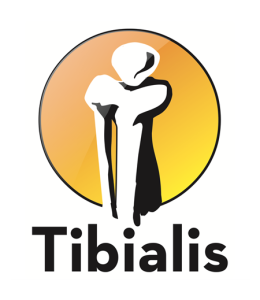Scar Tissue and Cement
Client: Describe your work to me.
Me: I manipulate scar tissue along the lines of misplaced muscles that cause nerve pain and loss of function.
Client: But I’ve heard it’s impossible to remove scar tissue without surgery.
Me: Nope. Let me explain.
A close friend has a PhD in cement. He wrote a paper on the role of rebar in cement and how it secures a building in an earthquake. I helped him translate the document from Japanese to English. Who knew there was so much to know about cement? Mixing, framing, pouring, rebar composition, cutting so it won’t crack, are all components of making cement a permanent and solid infrastructure. Scar tissue has the same role in repairing injury in the body.
For example, if you or a family member or friend has recently had a hip or knee replacement, physical therapy is usually on the scene within 24-48 hours after the surgery. Exercises, ice, and stretches are used to heal the tissue in the area of the surgery and to keep excess scar tissue from forming in the wrong place. However, if the knee is immobile for too long after surgery (aka the patient didn’t do their homework), then the knee may not regain full extension as excess scar tissue likely will limit the range of motion.
Scar tissue starts the healing process by binding the torn ends of the tissue together much like stitches and a butterfly bandage would do. Physical therapy is excellent in its protocol to mix, pour and coax the cement exactly where and how it is needed to repair the tissue after surgery. A well-formed scar will eventually turn into a well-formed structure that can sometimes provide a foundation even stronger than before the surgery. That scar tissue then becomes part of a permanent infrastructure.
What happens if excess scar tissue forms? What happens if there was no PT after an injury or a cast was wrapped around a broken bone and kept immobile for months? An injury can draw excess scar tissue into an area much like a kindergartener pouring a lot of white glue onto the back of the paper for a collage to be hung proudly on the refrigerator. More is better right?
In the case of a body, excess scar tissue can allow neighboring muscles to bond to the injured site. Then, muscles pushed by external forces can use a dollop of excess scar tissue to create an adhesion or trigger point on top of nerves or other muscles and bones altering the proper function of the body thus creating nerve pain.
In addition, there is a stretch reflex in the body that won’t allow the muscle to stretch past its physiological limit for fear that it might tear. When a baby is on the back reaching and kicking into space, the proprioception of the muscles is being trained as the brain learns how far a muscle can stretch. Excess scar tissue in a muscle can change the proprioception and range of motion sending warning signals to the brain that there is a problem. The reciprocal inhibition of the antagonistic or opposing muscle will also be altered, and the body now moves differently around a related joint.
The body inherently knows which scar tissue is rebuilding the natural state and which is in the wrong place. Exercises and stretching work great in the initial stages of an injury rehabilitation, but will stop working after the excess scar is set incorrectly. Unfortunately, these types of adhesions rarely respond to exercise and stretching. Muscle weakness caused by immobile muscles or nerve compressions cannot be strengthened. Stretching and exercising work to eliminate the formation of excess scar tissue in an acute injury or surgery; that protocol is less successful in a chronic range of motion or pain condition created after the excess scar tissue has formed.
What is the protocol that helps remove excess scar tissue in a chronic pain condition? This is what I do. Is this massage? Yes. The basic skills learning in massage school apply. What’s not so basic is trying to find the adhesion to release it. After many years of malfunction, the body can build many compensation plans protecting the original problem. Function is altered, muscles misfire, sometimes in very complicated patterns. Kinesiology experts can often detect the problem. The solution is to track into the expected muscle patterns to find the anomalies and to fix the problem. After over 15,000 hours as a muscle tracker massage therapist, I declare that I have a PhD equivalent.
My clients that have experienced improved body function understand this protocol. After detecting the underlying functional problem, the body can finally know what it feels like to once again experience a whole transfer of power from the foot to the hands to gain a longer drive off the tee, a more efficient walk or run, or more communication with the horse from the saddle.

